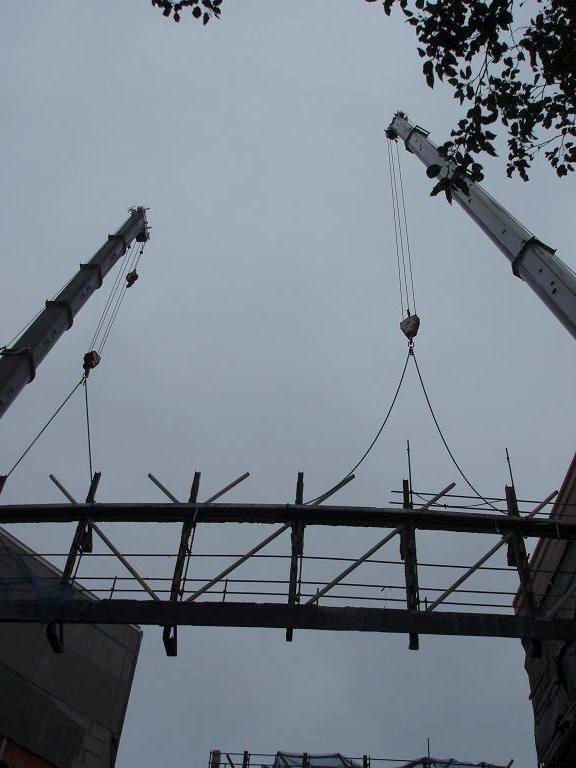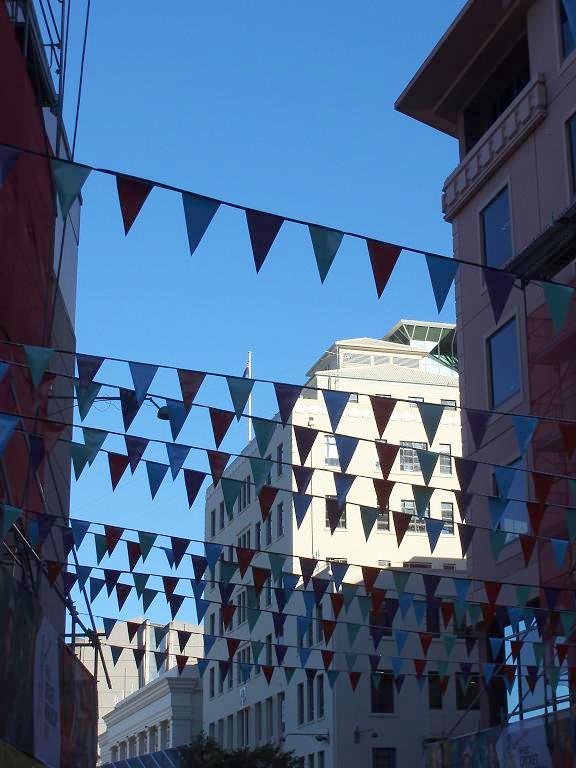
Now there’s an end to it (13 February 2015)
Captured last Friday (13 February), when cloudy conditions prevailed, this image is my last shot before the portico was finally dismantled. (See my earlier story for details.)
I’d show you a picture of the gap, but it’s still too messy over there right now.
“The $800,000 project to remove the earthquake-prone overbridge between the library and council office started in November, and was intended to be finished by Christmas,” according to Ian Douglas, owner of The Village Goldsmith in nearby Mercer Street. Mr Douglas’ comments were reported yesterday by The Dominion Post, under the headline, “Overrun portico project ‘damaging retail trade’“.
“It’s been a complete debacle,” [Ian] Douglas said. “Now it is dragging through what is normally our three busiest trading months.”
The news story reports Council spokesman Clayton Anderson as saying there would still be a week or two of “finishing work” but the heavy machinery would be gone and people could again walk through the area to Civic Square.









